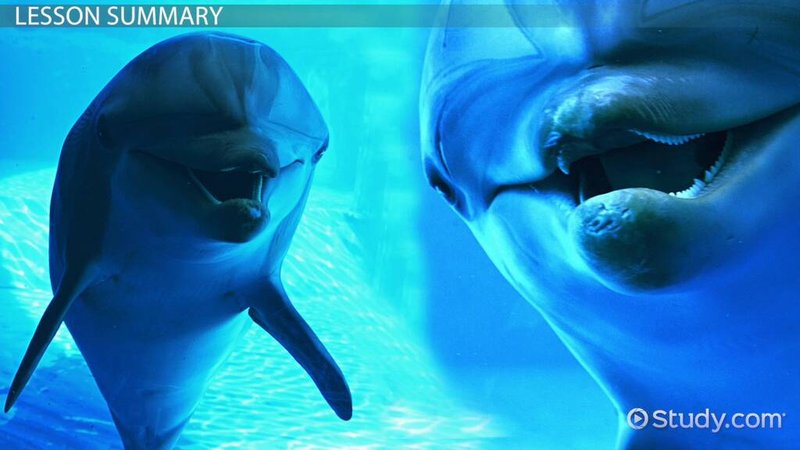
From their sleek bodies to their unique communication skills, each adaptation plays a crucial role in their survival. If you’ve ever watched a dolphin leap joyfully out of the water, you might’ve wondered how they do it so effortlessly. Let’s dive into the world of dolphins and explore the amazing adaptations that not only ensure their survival but allow them to thrive in their underwater playground.
Streamlined Bodies for Easy Movement
One of the first things you’ll notice about dolphins is their streamlined bodies. Imagine a pencil cutting through water—this is similar to how dolphins move. Their bodies are sleek and smooth, reducing drag as they swim. This design allows them to glide effortlessly through the ocean, reaching speeds of up to 25 miles per hour!
Dolphins also have a strong tail, called a *fluke*, which is horizontally oriented. This unique shape helps them propel themselves forward with powerful strokes. When they kick their tails, they generate enough force to launch themselves out of the water, performing those remarkable leaps we often see. Here’s the thing: every inch of their body is designed to enhance speed and maneuverability, making it easier for them to catch prey or evade predators.
Additionally, dolphins possess a layer of blubber beneath their skin. This thick fat layer insulates their bodies, keeping them warm in colder waters. Just like a cozy blanket in winter, this blubber is essential for maintaining their body temperature. It’s another way these amazing animals are perfectly suited for life in the ocean.
Adapted Breathing with a Blowhole
Dolphins breathe differently than we do. Instead of using their mouths like land animals, they have a special feature called a *blowhole* located on top of their heads. This adaptation allows them to take quick breaths while swimming. Imagine sipping a drink through a straw without needing to stop your conversation; that’s how dolphins breathe!
When a dolphin surfaces, it exhales forcefully through its blowhole, releasing a cloud of vapor that can sometimes be seen from a distance. After exhaling, they quickly inhale before diving back underwater. This method of breathing is efficient because it minimizes the time spent at the surface where they might be vulnerable to predators.
What’s interesting is that dolphins have voluntary control over their breathing. Unlike humans, who breathe automatically, dolphins must consciously decide when to take a breath. This ability is crucial, especially when they’re diving deep underwater in search of food. By controlling their breaths, dolphins can stay submerged for longer periods, sometimes even for up to 15 minutes without surfacing!
Excellent Communication Skills
Communication is key in the dolphin world, and they’re exceptional at it. Using a mix of clicks, whistles, and body language, dolphins have developed a complex system of vocalizations to interact with one another. Think of it as their own underwater language!
The clicks and whistles serve different purposes, from signaling danger to coordinating hunting strategies. For example, dolphins often use *whistles* to maintain contact with each other while traveling in groups. This social behavior is essential for young dolphins, who learn important skills and behaviors by mimicking their elders.
Moreover, dolphins can also echolocate, which is like using sonar. They emit sounds that bounce off objects and return, providing them with information about their surroundings. This ability is particularly helpful in murky waters where visibility is limited. Just imagine having a built-in radar system to navigate through dark or unclear areas—that’s how dolphins “see” their environment!
Highly Developed Senses
Dolphins have an impressive set of senses that help them thrive under water. Their sense of hearing is particularly remarkable. They can hear sounds at frequencies that are inaudible to humans, allowing them to detect prey and communicate effectively over long distances. It’s like having superhuman hearing!
While dolphins’ eyesight is good, it’s their acute sense of hearing that truly stands out. They can pick up even the faintest sounds in their environment, which is crucial for locating fish or other marine life. When hunting, they often rely on their ears to track the movements of their prey.
Interestingly, dolphins also have a unique way of perceiving their world through their skin. Specialized receptors in their skin can pick up vibrations and changes in water pressure. This means they can sense movements in the water around them, much like how we feel a breeze on our skin. It’s another layer of sophisticated adaptation that shows just how well equipped these animals are for life in the ocean.
Social Behavior and Intelligence
Dolphins are known for their social behavior and high intelligence. They often live in groups called pods, which can range from a few individuals to over a hundred. These social structures provide safety in numbers, as they can work together to fend off predators or cooperatively hunt for food.
Inside these pods, dolphins engage in playful behaviors, which are essential for developing social bonds. Young dolphins, in particular, learn crucial skills through play, such as hunting techniques and social interactions. It’s like being part of a close-knit family where everyone contributes to each other’s growth and well-being.
Moreover, dolphins exhibit self-awareness and problem-solving abilities. Studies show that they can recognize themselves in mirrors and have the capacity to understand complex tasks. This intelligence is a significant part of what makes dolphins so captivating. They’re not just surviving; they’re thriving, and they do it together, navigating the challenges of their underwater world with teamwork and cleverness.
Dietary Adaptations for Survival
Dolphins are carnivorous, meaning they eat meat, primarily fish and squid. Their dietary adaptations are fascinating and critical for their survival. Dolphins have a varied diet, which allows them to thrive in different environments. Depending on their habitat, some dolphins may focus on specific types of fish, while others might prefer squid or even crustaceans.
What’s interesting is their hunting techniques. Dolphins are known for cooperative hunting, where they work together to herd fish into tight groups, making them easier to catch. It’s like a choreographed dance in the water! This strategy not only helps them capture more prey but also strengthens social bonds within their pods.
They also have rows of sharp teeth that are perfect for grasping slippery fish. Instead of chewing, dolphins swallow their food whole, allowing them to quickly refuel for their active lifestyles. With their keen sense of hearing and echolocation, they can locate their prey efficiently, ensuring they get enough to eat in their vast underwater home.
Dolphins are remarkable creatures that have developed a wide range of adaptations to thrive in their underwater world. From their sleek bodies to their advanced communication skills, each adaptation plays a vital role in their survival. Isn’t it amazing to think about how these adaptations help them navigate, hunt, and bond in the ocean?
Understanding these adaptations not only deepens our appreciation for dolphins but also highlights the importance of preserving their natural habitats. By protecting the oceans, we ensure that these incredible animals continue to thrive for generations to come. So the next time you see a dolphin swimming gracefully through the waves, remember all the clever adaptations that make it possible for them to live and thrive in an ever-changing environment.

